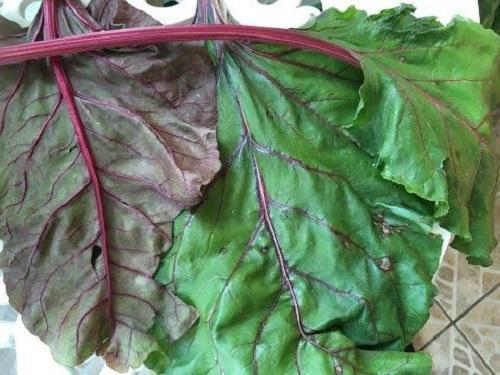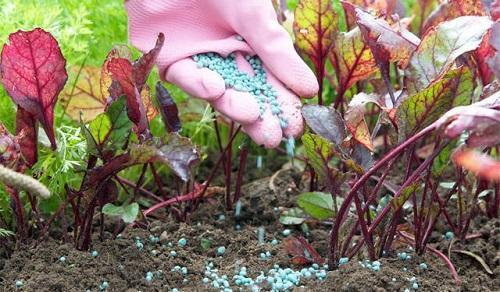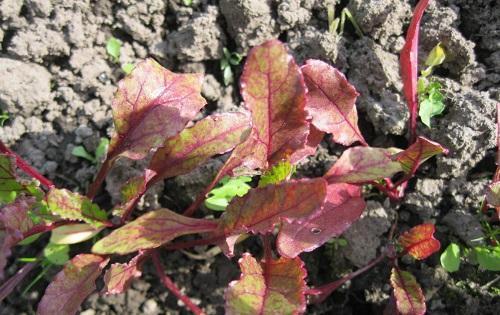Redness of beet tops: what is the reason and how to deal with it
 When growing beets, gardeners have little trouble - water, weed and thin out. Then the vegetable grows on its own and you don't have to look at the beds until harvesting. On the other hand, do not miss the problems that have arisen for a short time, which can significantly reduce the amount of root crops and worsen their quality. One of such common problems is the change in color of the tops. In healthy bushes, the petioles are red, and the leaves are green, but sometimes the red color begins to transfer to the leaf plate.
When growing beets, gardeners have little trouble - water, weed and thin out. Then the vegetable grows on its own and you don't have to look at the beds until harvesting. On the other hand, do not miss the problems that have arisen for a short time, which can significantly reduce the amount of root crops and worsen their quality. One of such common problems is the change in color of the tops. In healthy bushes, the petioles are red, and the leaves are green, but sometimes the red color begins to transfer to the leaf plate.
Why beet leaves turn red and what to do about it depends on the specific reasons for this phenomenon. Most often these include:
- lack of trace elements;
- increased acidity of the soil.
Lack of nutrition

Beet tops are an indicator of plant health. As soon as it begins to experience a lack of trace elements, it immediately affects the leaves. By the nature of the changes, it is possible to establish what specific substance the beets need:
- Lack of sodium... Outwardly healthy juicy leaves become red in color. Solution to the problem: water the plantings directly on top with a solution of kitchen salt (250 g per bucket of water).
- Lack of phosphorus... The leaves first fade, then turn dark, and then turn red. Solution to the problem: add superphosphate to the beds.
- Lack of potassium... The green color of the tops gradually disappears, and it is replaced by a rich dark red hue, while the leaves curl. Solution to the problem: feed the beets potassium chloride.
It is important to establish exactly what kind of substance the beets lack, because the excess of trace elements will also affect the future harvest.
Increased acidity

Beet tops also turn red if the soil on which they are grown has an increased level of acidity. Beets grow well and bear fruit only in neutral soils.
You can check the acidity of the earth in the folk way. To do this, moisten a handful of soil, roll it into a cake and pour a little vinegar on top. The appearance of bubbles indicates that the earth is alkaline.
If nothing happens, make another cake and sprinkle it with regular baking soda. With increased acidity, it will hiss, with neutral - there will be no reaction.
To reduce the acidity of the soil, apply to the site ash based on 100 g of substance for each square meter of area.